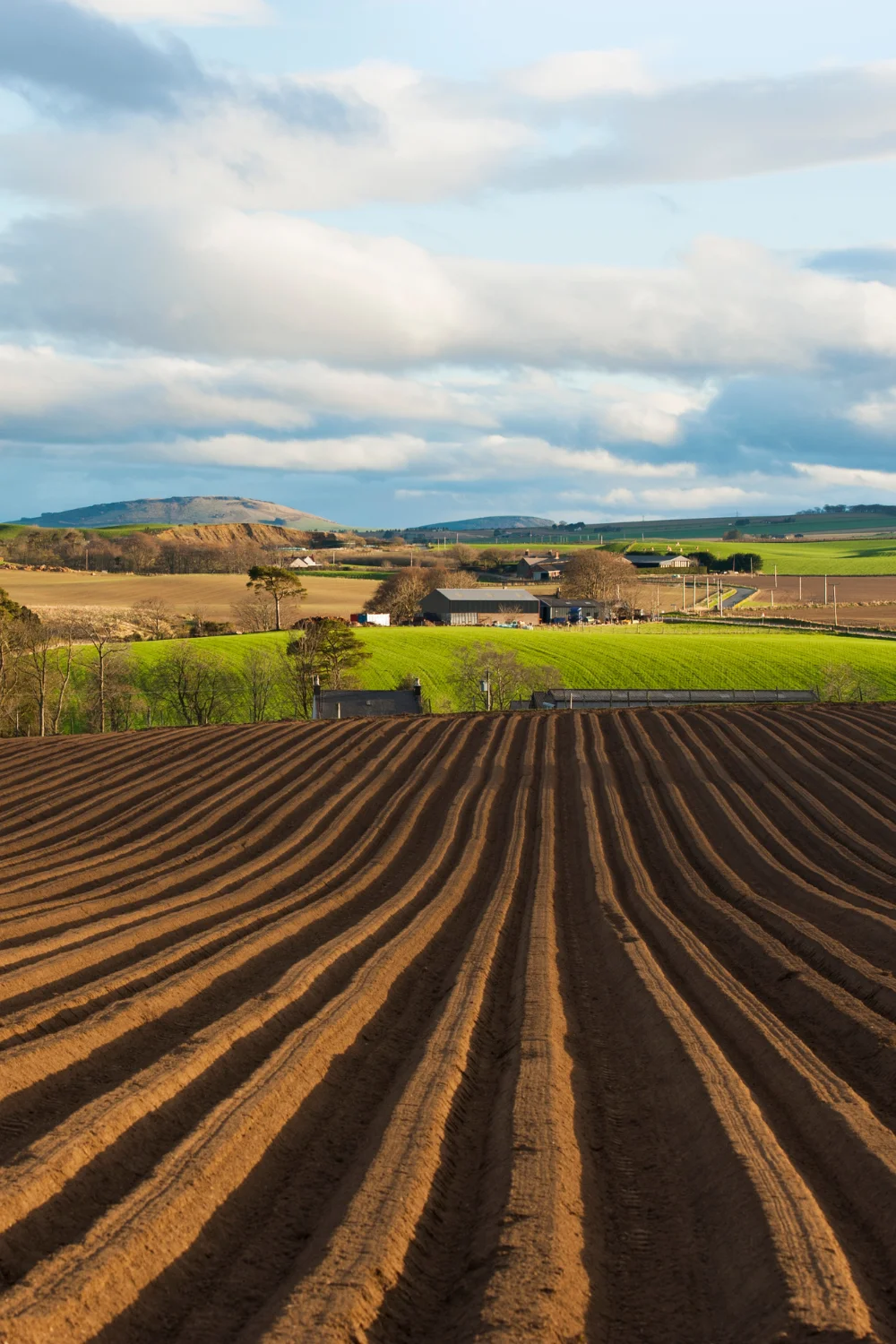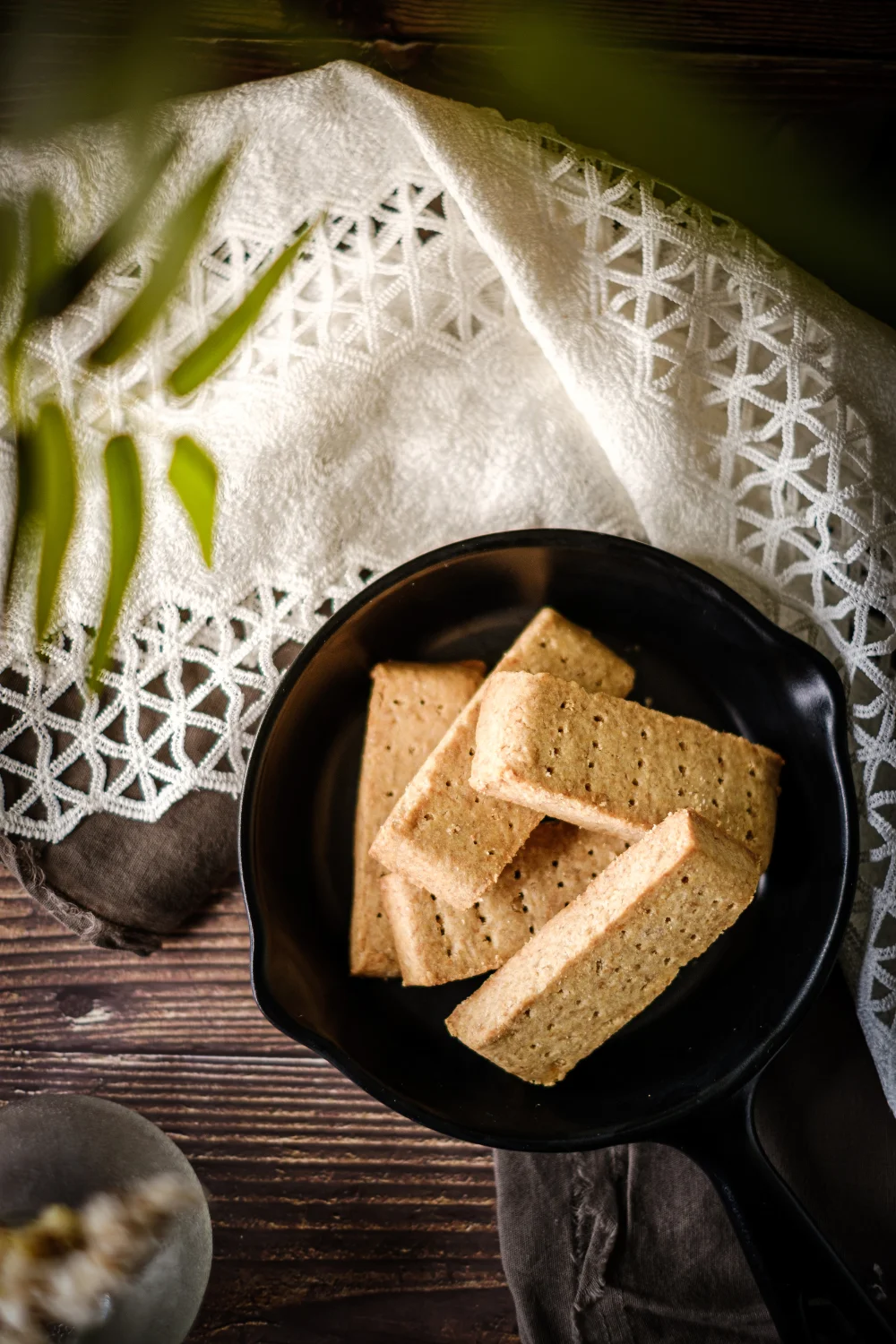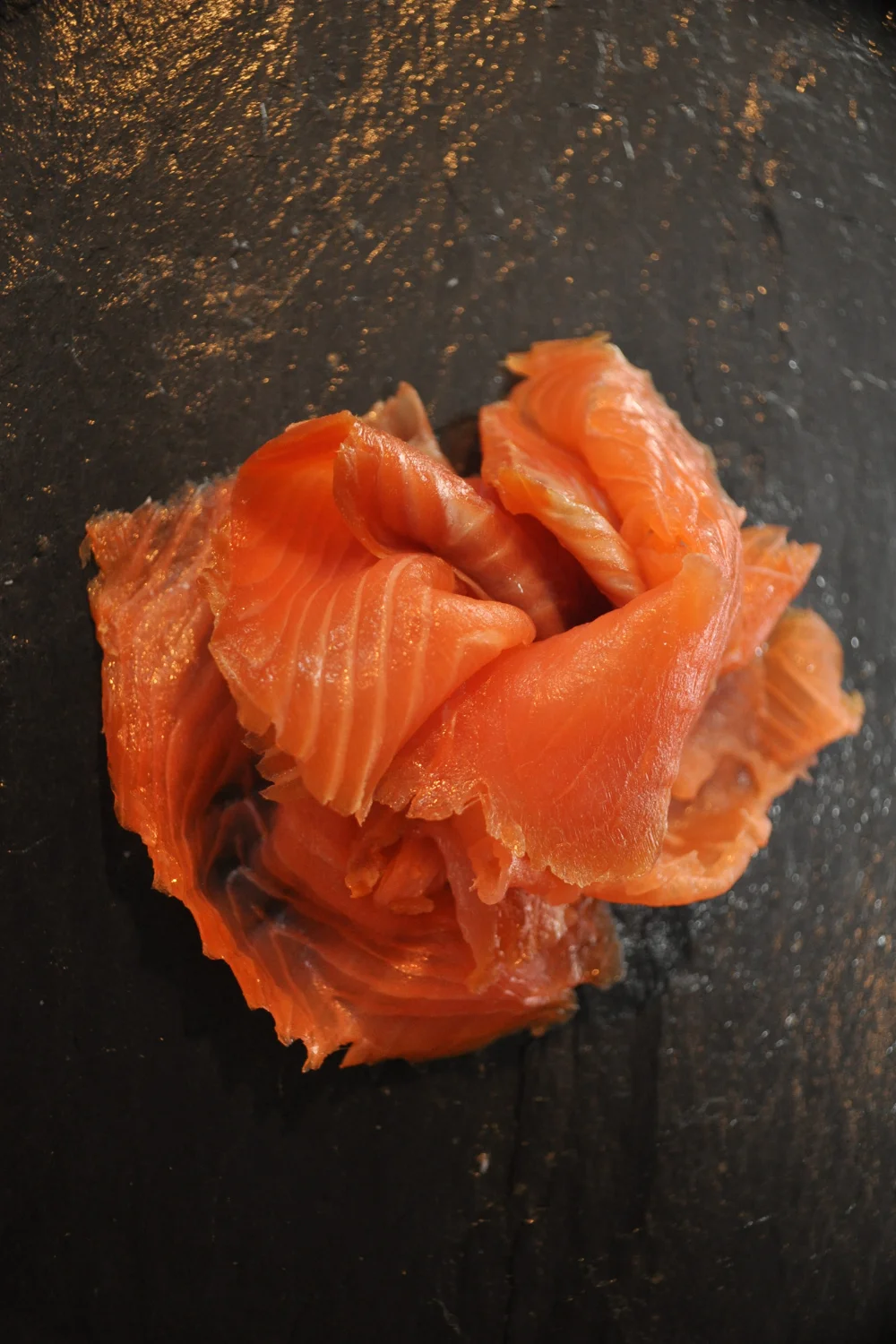SCOTTISH FOOD FOR CURIOUS TRAVELERS: FROM MARKET FARE TO MICHELIN

Scottish food invites travelers into a world where every dish is steeped in story, shaped by land, and served with heart.
It goes far beyond the flavors on the plate and reflects Scotland’s rugged coastlines, misty glens, and fiercely proud communities.
Whether you're sipping soup by a harbor or nibbling shortbread in a city café, the flavors here speak volumes.
If you’re hungry for culture, heritage, and a bit of culinary adventure, Scotland will feed your curiosity in every way.
Related: Cruise Dining & Food: Palate Pleasing Culinary Crusade
A Culinary Identity Forged by Climate and Culture
Scottish food reflects centuries of tradition shaped by rugged landscapes, local farming, and rich maritime resources.
Scotland’s cuisine wasn’t built on opulence. It evolved from necessity—simple ingredients turned into hearty meals that could withstand wet weather and hard work.
Oats, barley, root vegetables, and game formed the staples, with fish playing a central role in coastal regions.
Over time, this pragmatic approach created a cuisine that’s flavorful, comforting, and deeply regional.
Whether it’s a pot of Cullen skink warming you from the inside or a slab of Aberdeen Angus beef grilled to perfection, Scottish food tells a story of place and perseverance.
What to Expect at a Scottish Table
You’ll find that Scottish food is both hearty and humble while built on ingredients like oats, game, and root vegetables.
Dining in Scotland often feels like stepping into a family kitchen. Meals are generous, often shared, and grounded in tradition.
Expect robust stews, fresh seafood, and lots of carbs to counter the bracing weather.
The flavors lean savory—think salted, smoked, and slow-cooked.
But desserts hold their own too, with buttery pastries and custard-rich puddings.
Scottish Breakfast Foods Worth Waking Up For
A meal full of Scottish breakfast foods isn’t for the faint-hearted.
You’ll typically see eggs, sausage, black pudding, baked beans, tattie scones, grilled tomato, and toast all crammed onto one plate.
In some parts of the country, you might even encounter haggis alongside your morning fry-up.
Whether you go traditional or opt for a lighter version, breakfast in Scotland sets the tone for the day—bold, comforting, and deeply satisfying.
Everyday Staples and Crowd Favorites
Dishes like stovies (potato and meat hash) and Scotch broth (a barley-based soup) are daily staples in many households.
Scottish oatcakes often accompany soup or cheese, offering a crumbly, savory contrast to smoother textures.
Meanwhile, fish and chips from a seaside chippy—wrapped in paper and eaten by the water—deliver a bite of nostalgia with every crunch.
Michelin Stars and Modern Reinventions
From street markets in Glasgow to fine dining in Edinburgh, Scottish food today is as diverse as the people who cook it.
The new generation of Scottish chefs isn’t afraid to push boundaries. While they honor tradition, they’re also introducing global flavors and innovative techniques into classic dishes.
The result? Dishes that look like art and taste like home.
Think venison tartare with elderberry gel, or a reimagined cranachan served as a mousse with whiskey pearls.
Several restaurants now hold Michelin stars, signaling that Scottish food has arrived on the world stage—without losing its roots.
Scottish Meat Pies Reimagined
Take the humble Scotch pie, for instance. Traditionally filled with minced lamb and spices, today’s versions include wild mushroom duxelles, pulled pork, or curried vegetables.
It’s innovation grounded in comfort.
Scottish Seafood Dishes With a Twist
Restaurants along the coast now serve hand-dived scallops with lemongrass foam or langoustines paired with pickled rhubarb.
These updates elevate already exceptional ingredients into culinary centerpieces.
Vegetarian and Vegan Twists on Traditional Scottish Recipes

The Scottish food scene is evolving to accommodate plant-based eaters.
Creative chefs are putting a vegetarian spin on classic dishes.
You’ll find lentil-based Scotch broth, mushroom haggis, and even dairy-free cranachan using coconut cream and oat milk.
These versions don’t compromise on flavor. They highlight Scotland’s rich agricultural offerings while ensuring everyone at the table feels included.
Street Markets and Local Bites
Travelers craving a more casual experience won’t be disappointed.
Scotland’s street food scene is flourishing, with market stalls and food trucks offering everything from gourmet mac and cheese to venison burgers.
Expect seasonal menus, locally sourced produce, and passionate vendors happy to share the story behind each bite.
The vibe is friendly, fast-paced, and bursting with creativity.
Haggis and Neeps You’ll Actually Want to Try
Forget the stereotypes.
When made well, haggis and neeps (turnips) are earthy, rich, and surprisingly refined. Modern takes might see haggis folded into croquettes or served with a whiskey reduction.
Scottish Shortbread Cookies and Sweet Street Snacks
Scottish shortbread cookies are a must-try: buttery, crumbly, and impossible to eat just one.
You’ll also find tablet (a sugary, fudge-like treat) and empire biscuits gracing bakery counters across the country.
Coastal Bites: Scotland’s Best Seafood Stops
Whether you’re sampling coastal shellfish or a simple bowl of porridge, Scottish food always offers a sense of place.
Head to Oban for freshly shucked oysters, or Mallaig for smoked haddock straight from the boat.
In the north, you’ll find Cullen skink, a creamy fish soup made with smoked haddock, potatoes, and onions. It’s a dish that captures the briny air and quiet resilience of Scotland’s fishing towns.
A Closer Look at Regional Specialties
Scottish food varies by region, giving travelers even more reason to explore the country from coast to coast.
In the northeast, you might sample Cullen skink and buttery Aberdeen Angus beef.
The Lowlands lean into soft cheeses, dairy, and home-baked goods, while the islands offer seafood-forward menus flavored by wild herbs and sea salt.
Each region tells its own story through ingredients and technique.
Trying local specialties brings Scotland’s diversity—and deliciousness—into sharper focus.
Cooking Classes and Culinary Tours for Food-Focused Travelers

Food lovers can dive deeper by signing up for a cooking class or joining a culinary tour.
In Edinburgh, hands-on workshops teach everything from baking oatcakes to crafting the perfect shortbread.
On the Isle of Skye, guests can forage with local chefs before returning to the kitchen to prepare their finds.
Walking food tours in Glasgow, Inverness, and beyond offer curated tastings that span Scottish meat pies, cheeses, spirits, and seafood.
These experiences are educational and memorable, connecting travelers more intimately with local culture.
Related: The Best Scotland Castle Tours
Highland Hospitality: Eating With Locals
Trying Scottish food while traveling is a way to engage with the country's history and hospitality.
In rural areas and the Highlands, hospitality is a point of pride.
Guests are often treated like family, and meals stretch into hours of storytelling, laughter, and second helpings.
Farm stays and B&Bs frequently serve homemade jams, scones, and savory pies.
You might even be invited into a home for dinner—a rare and memorable opportunity to eat like a local.
Seasonal and Festive Traditions
Scotland’s culinary calendar is rich with celebration. From Hogmanay to Burns Night, festive dishes play a starring role.
During the holidays, you’ll encounter rich meats, warming spices, and traditional puddings.
On Burns Night, expect a full ceremonial dinner featuring haggis, whiskey, and poetry.
And don’t forget the summer Highland Games, where food stalls serve everything from venison burgers to cranachan.
Scottish Festive Foods With Deep Roots
Scottish festive foods are delicious, but they also carry cultural significance.
Black bun, a fruit cake wrapped in pastry, is eaten on New Year’s. Selkirk bannock, a rich bread dotted with raisins, often appears at holiday tables.
The Role of Whisky in Scottish Food Culture
Whisky is Scotland’s most famous export and a staple in its national cuisine.
Beyond the distillery tours and tastings, whisky frequently shows up on the plate.
Many chefs cook with single malts to add depth to sauces, glazes, and desserts. The smoky, sweet, or peaty notes of different whiskies offer a spectrum of flavors that elevate simple dishes.
Some restaurants pair each course with a complementary dram, turning meals into full-sensory tasting experiences.
Even traditional recipes like cranachan or steak pies often include a splash of the good stuff.
Whether you're sipping or savoring, whisky ties together Scotland’s culinary heritage with bold, warming character.
Sustainable Food Practices in Modern Scottish Cuisine
Sustainability is becoming a key ingredient in Scottish food.
Chefs, farmers, and fishers across the country are championing local sourcing, seasonal menus, and nose-to-tail cooking.
In the Highlands, game is hunted respectfully and used in full. Coastal towns focus on line-caught fish and shellfish to protect marine ecosystems.
Markets highlight organic produce from nearby farms, and more eateries are spotlighting vegan and vegetarian Scottish dishes for health and planet-conscious reasons.
Rather than trendy, these shifts are rooted in centuries-old values of stewardship, seasonality, and respect for the land.
Travelers looking to support ethical dining will find plenty of options that feel as good as they taste.
From Street Food to Fine Dining: Eat Your Way Through Scotland with Royal Caribbean
Scottish food deserves a spot on every curious traveler’s culinary bucket list.
Whether you’re strolling through Edinburgh’s historic closes or gazing out over the Highlands, every bite connects you to a deeper story.
With Royal Caribbean, that experience becomes even more accessible—offering travelers the chance to explore Scotland’s diverse food culture while enjoying the comfort of a world-class cruise.
On select Royal Caribbean summer itineraries, Scotland becomes a featured destination.
Ports like Greenock (gateway to Glasgow) and Edinburgh (via Newhaven) open the door to everything from seafood sampling in Oban to whisky tastings in Speyside.
Craving flaky Scottish meat pies or dreaming of fresh Scottish seafood dishes straight from the harbor? These excursions let you dive into the local flavor without the hassle of planning every detail yourself.
Back onboard, the culinary adventure continues.
Royal Caribbean ships are known for their global dining options, and Scottish flavors often make an appearance. Ports of call always inspire themed dishes, specialty menus, or onboard tastings. You can explore traditional Scottish recipes while sailing the North Sea, then compare notes with locals during shore excursions.
A Royal Caribbean cruise to Scotland is a passport to authentic, regional flavors served with Highland hospitality.
Book now, come hungry, and leave with stories (and maybe a tin of Scottish shortbread cookies) to share.






